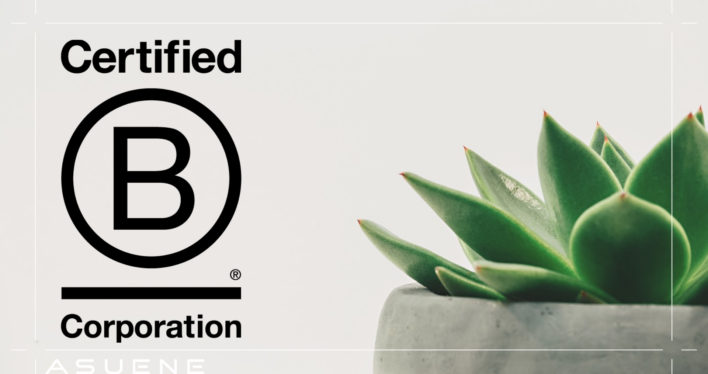- Article Summary
-
What is B Corp Certification and Why It Matters
In today’s era of sustainable business and socially responsible business practices, B Corp Certification has emerged as the gold standard for verified social and environmental performance. A Certified B Corporation (or B Corp) is a company that meets high standards of overall social and environmental impact, accountability, and transparency. Unlike traditional companies that focus solely on profit, B Corps are ethical businesses legally required to consider the impact of their decisions on all stakeholders – including workers, communities, customers, and the environment. This ethos turns the tables on the old profit-over-people model and aligns business with a higher purpose of benefiting society and the planet.
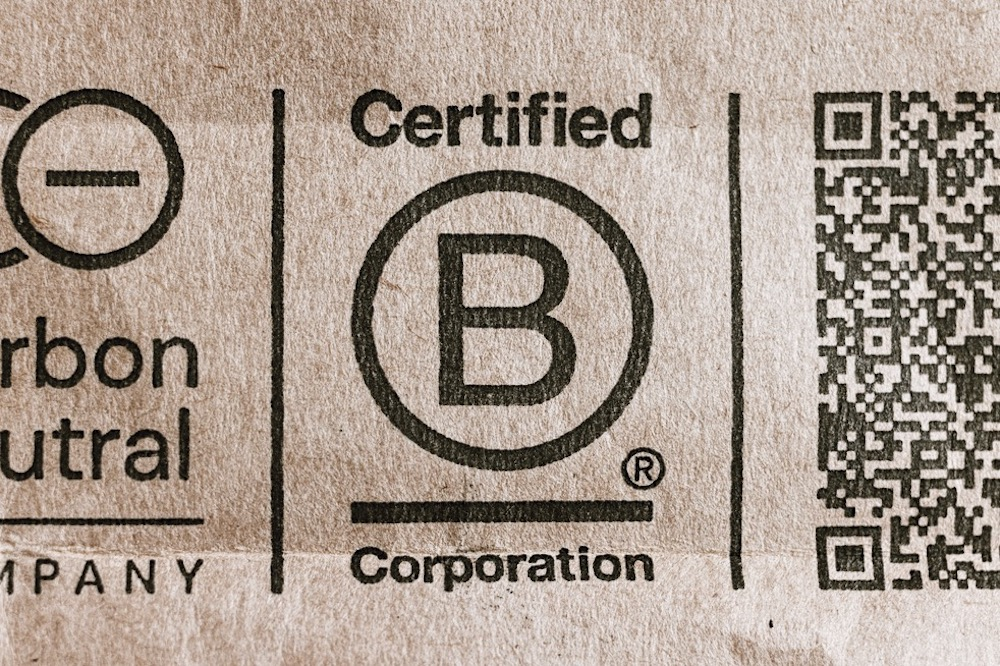
B Lab, the nonprofit behind B Corp certification, evaluates companies across areas like governance, worker treatment, community engagement, environmental sustainability, and customer impact. Businesses that earn the certification join a global movement using “business as a force for good.” As of 2023, there are over 7,300 Certified B Corps operating in 93 countries and across 161 industries – a community that ranges from small startups to iconic brands. Well-known examples include Patagonia and Ben & Jerry’s, which have become synonymous with conscious consumerism and impact investing. Patagonia, for instance, became a B Corp back in 2011 and has a B Impact Score of 151.4 as of its 2020 assessment, reflecting its deep commitment to environmental and social causes.
For businesses, the benefits of becoming a B Corp are substantial. B Corp Certification provides verified social impact, enhancing your credibility with customers, investors, and partners. It signals to conscious consumers that your company meets the highest standards of sustainability and ethics, which can boost brand reputation and customer loyalty. It also helps attract values-driven employees and impact investors who seek companies that balance purpose and profit. In short, B Corp status showcases your commitment to people, planet, and profit – the triple bottom line – and sets you apart as a leader in environmental sustainability and social responsibility.
In this blog, we’ll walk through how to obtain B Corp certification, step by step. We’ll cover the B Impact Assessment process, tips to improve your social and environmental performance, and real-world examples of companies that achieved certification.
Real-World Examples of B Corp Success
Thousands of companies around the world have successfully obtained B Corp Certification, each with their own motivating stories and impact achievements. Here are a few diverse examples:
- Patagonia – The outdoor apparel brand became one of the earliest B Corps in 2011. Patagonia is famed for its radical commitment to the environment (it famously donates 1% of sales to environmental causes and even redesigned its business model to combat overconsumption). With a verified score well above 150 points, Patagonia demonstrates that even mid-sized companies can excel across all impact areas. Their B Corp report highlights strengths in community and environment, from giving employees time to volunteer, to using recycled materials and renewable energy extensively. Patagonia’s outspoken advocacy for environmental and social issues shows how a B Corp can influence an entire industry to be more conscious.
- Ben & Jerry’s – The iconic ice cream company became a B Corp after being acquired by Unilever, proving that even subsidiaries of large multinationals can certify. Ben & Jerry’s is known for its community engagement and activism (supporting campaigns for racial justice, fair trade, and climate action). In one assessment, they scored a remarkable 110 points, reflecting strong performance in governance and community impact. They’ve leveraged the B Corp framework to set targets for further improvements, such as sustainable dairy farming and worker benefits, and they publicly share their progress in annual social impact reports. Ben & Jerry’s shows that businesses can grow and still remain socially responsible.
- Danone North America – A division of the global food & beverage company Danone, it achieved B Corp certification in 2018 and at the time became the largest Certified B Corp in the world. This case exemplifies how even large enterprises can navigate the process. Danone had to assess dozens of facilities and brands, implement governance changes, and meet B Lab’s rigorous standards across a big organization. The effort paid off: they integrated sustainability into their supply chain (supporting regenerative agriculture, for example) and improved policies for workers. Their successful certification sent a message that B Corp isn’t just for niche players – it’s scalable to big corporations committed to change.
- Small Local Businesses – It’s not only famous brands becoming B Corps. For example, imageMILL, a Tokyo-based creative agency, earned B Corp certification in 2023 with an impact score of 85.2. They blend journalism and branding to create socially impactful media, and their certification underscores that even smaller creative companies can meet the standards. Another example is Kuradashi, a Japanese food waste reduction e-commerce company, certified in 2022 with a score over 110. By rescuing products that would otherwise go to waste, Kuradashi built a profitable model around solving a social problem – and B Corp validation helped cement its credibility as a socially responsible business. These cases show that no matter the size or industry, what B Corps have in common is a mission-driven approach and a commitment to improvement.
Each B Corp’s journey is unique, but common themes emerge: strong leadership commitment, extensive employee involvement, a willingness to change how they do business, and a passion for using business to make a difference. The certification provides a framework and credibility, but the day-to-day work of being a B Corp comes from the culture and values a company fosters.
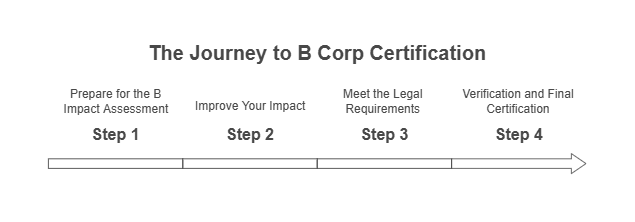
Step 1: Prepare for the B Impact Assessment – Measuring Your Impact
The first step toward B Corp certification is to measure what matters using the B Impact Assessment (BIA). The B Impact Assessment is a free, confidential online tool – described by B Lab as “the most credible tool a company can use to measure its impact on its workers, community, environment, and customers”. In other words, it’s a comprehensive impact assessment of your entire business, covering everything from your carbon footprint and charity work to employee benefits and supply chain ethics.
Start by registering on B Lab’s website and completing the B Impact Assessment questionnaire. You’ll be asked detailed questions spanning five key impact areas:
- Governance: Your company’s mission, ethics, accountability, and transparency in pursuing socially responsible business practices.
- Workers: How you support worker well-being through fair wages, benefits, training, safety, and workplace culture.
- Community: Your engagement with and impact on the community, including diversity, equity, inclusion, philanthropy, and community engagement initiatives.
- Environment: Your environmental management practices and sustainability efforts, such as energy use, waste reduction, carbon emissions (important for climate-focused businesses), and product lifecycle impacts (environmental sustainability).
- Customers: The impact of your products or services on customers, including whether you assist under-resourced populations or promote public benefit.
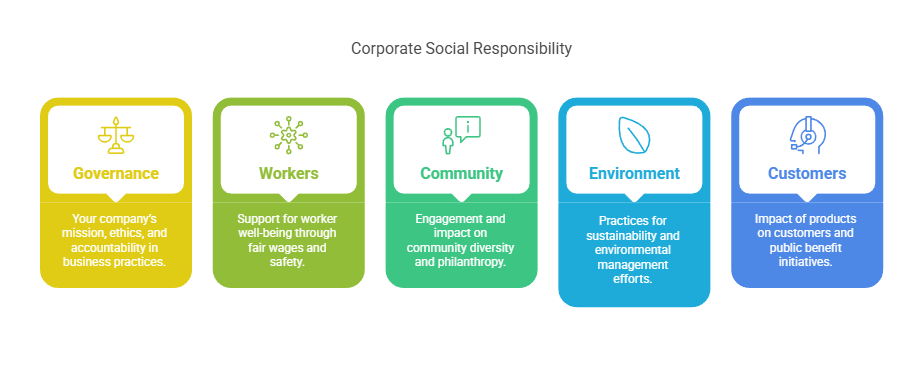
Before you begin, gather documentation and data to support your answers (e.g. HR policies, environmental reports, financial records). The assessment is rigorous and may take several weeks to complete, depending on your company’s size and complexity. You can save your progress and return as needed.
- Tip: Involve team members from different departments (HR, operations, sustainability, etc.) to get accurate information for each section. Taking a collaborative approach ensures you capture all aspects of your impact and builds internal buy-in for the improvements you might need to make.
When you finish the B Impact Assessment, you’ll receive an initial B Impact Score out of 200 possible points. This score is essentially your sustainability and social impact report card. Don’t be discouraged if your first score is below the passing mark – most companies score around 40–50 points on their first go. The minimum score to qualify for B Corp Certification is 80 points. For context, the median score for ordinary businesses taking the assessment is about 50.9, whereas only those scoring 80+ are eligible to become B Corps. In other words, the bar is set high, and that’s by design – B Corp certification is meant to distinguish exceptional sustainable and ethical business performance.
If your score is below 80, don’t worry. B Lab provides an Improvement Report highlighting areas where you can boost your score. Use this feedback to identify quick wins and longer-term changes. Common improvement areas include instituting more worker-friendly policies, reducing waste or energy use, adopting ethical sourcing standards, or increasing community giving. Many businesses treat the B Impact Assessment as a road map for improvement: it helps pinpoint gaps and motivates your team to implement best practices in pursuit of the 80-point threshold.
Step 2: Improve Your Impact – Tips to Meet B Corp Standards
Achieving the 80-point benchmark may require making tangible changes in your operations and policies. This step is all about enhancing your sustainability and social impact so that you meet B Lab’s high standards. Consider it an opportunity to transform your business for the better. Here are some strategies to improve in each impact area:
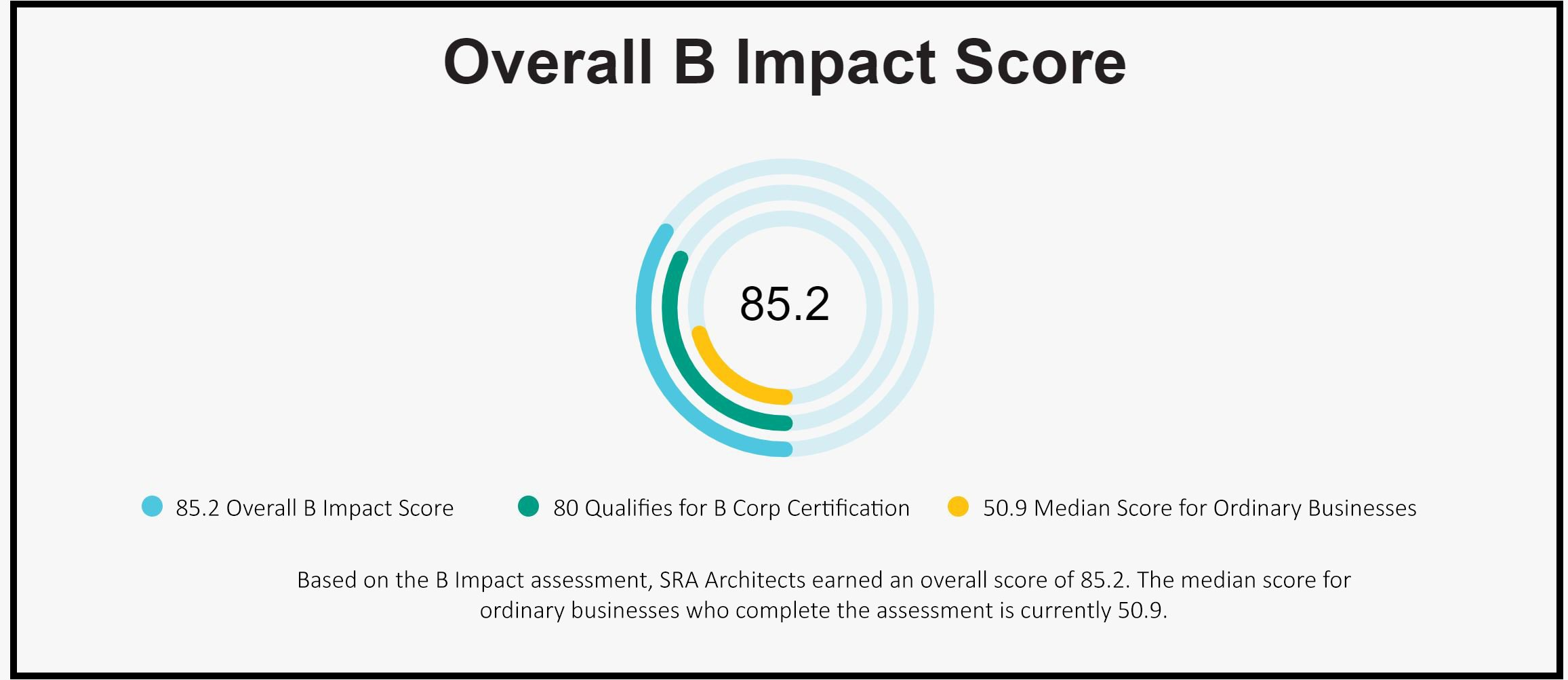
- Governance: Embed your mission and values into your company’s DNA. For example, update your mission statement or corporate charter to formally include social and environmental goals. Ensure your board and leadership are accountable for ethical business practices and transparency. Some companies even establish an impact committee or appoint a Chief Impact Officer to oversee progress.
- Workers: Invest in your employees’ well-being. Offering living wages, generous benefits, healthcare, flexible work arrangements, and training programs can significantly boost your worker impact score. Foster an inclusive, engaging workplace culture with strong worker well-being initiatives. Remember, a happy and engaged team is not only an assessment metric – it’s also key to your business success.
- Community: Deepen your community involvement. This could mean increasing charitable donations, offering paid volunteer days for employees, supporting local suppliers, or launching programs that benefit your community. Ensure diversity and inclusion in hiring and promotion. Community engagement efforts not only improve your BIA score but also strengthen local relationships and brand loyalty.
- Environment: Step up your sustainability game. Conduct a carbon footprint analysis and set targets to reduce emissions (for example, using Asuene’s carbon accounting platform). Implement recycling, waste reduction, and energy efficiency measures in your operations. If you produce goods, consider eco-friendly materials and packaging. Even small changes – like switching to renewable energy or encouraging a remote work policy to cut commuting – can add up. Document these initiatives, as you’ll need evidence for certification.
- Customers: Focus on customer impact and product/service benefits. If applicable, highlight how your offerings promote health, education, or environmental awareness. Solicit customer feedback and implement a code of ethics for marketing and customer data privacy. If your business serves disadvantaged populations or addresses a social need, make sure to capture that impact in the assessment.
As you implement improvements, update your B Impact Assessment responses to see how your score rises. It may take time (and possibly another assessment cycle) to cross 80 points, but many companies find value in the journey itself. The process pushes you to operationalize your values and often leads to cost savings (through efficiency) and innovation in the long run. Companies also report that striving for B Corp status energizes their employees – it creates a shared mission that goes beyond profits, boosting morale and commitment.
Step 3: Meet the Legal Requirements
Beyond the performance score, B Corp Certification also has a legal component. B Lab requires companies to integrate stakeholder interests into their legal governance structure. In practice, this means adjusting your articles of incorporation or equivalent governing documents to affirm that your business will consider the impact of decisions on all stakeholders (not just shareholders). This legal accountability locks in your commitment to social responsibility for the long term.
The exact requirement varies by jurisdiction and company type, but B Lab provides a Legal Requirement Tool to guide you. For example, in many U.S. states, a corporation can amend its articles or bylaws to become a benefit corporation (a legal status distinct from B Corp certification) or add benefit corporation provisions. LLCs or other entities might adopt similar language in their operating agreements. Essentially, you are formalizing that your company’s purpose includes creating a material positive impact on society and the environment.
This step can sound daunting, but it’s a crucial part of protecting your mission. By baking sustainability and social good into your legal DNA, you prevent mission-drift in the future (like in the event of new investors or leadership). Many B Corps find that this legal change cements their identity as a conscious business and reassures stakeholders that their commitment is not just marketing talk.
You may want to consult with a lawyer familiar with B Corp requirements to ensure you do this correctly. Once done, you’ll typically need to submit documentation to B Lab showing you’ve adopted the necessary legal language. Keep in mind that you don’t have to complete this step before taking the B Impact Assessment – often, it’s done in parallel or even after your initial score is verified. B Lab will give you a timeline (usually 1-2 years post-certification) to make the legal changes if they can’t be done immediately, but you must agree to pursue them.
Step 4: Verification and Final Certification
Once you’re scoring at least 80 points on the B Impact Assessment and you’ve committed to the legal requirements, it’s time to initiate the verification process with B Lab. This is where your impact investing in improvements pays off. You will submit your B Impact Assessment for review on B Lab’s platform. Given the popularity of B Corp certification (thousands of companies are in the queue), there might be a waiting period before a B Lab analyst is assigned to your review.
During verification, B Lab conducts a thorough audit of your assessment. An analyst will likely schedule a review call with your team to go over your responses and ask for evidence to back them up. Be prepared to provide documentation for various questions – for example, if you claimed you have low carbon emissions, have your emissions reports or energy bills handy; if you stated you donate profits to charity, have those records available. This verification step is rigorous but it’s what gives the B Corp certification its credibility. B Lab wants to ensure that every point in your score is earned and supported by real practices or policies (hence the emphasis on verified social impact).
Commonly, companies might see their score adjust after verification – some points could be added if you had additional positive practices, or deducted if certain answers don’t have sufficient proof. Don’t be discouraged by this fine-tooth review; it’s meant to uphold the integrity of the certification. If you come up short of 80 points after the verified adjustments, B Lab may allow you to try again after further improvements. But if you meet or exceed 80 points in the verified score, congratulations – you’re nearly there!
The final steps are to sign the B Corp Agreement (agreeing to the terms of certification, fees, and re-certification cycle) and pay the certification fee. The fee varies based on your company’s revenue (larger companies pay more), since it supports B Lab’s ongoing work and the verification process. Once that’s done, you will officially be a Certified B Corporation.
B Lab will list your company in the public B Corp directory, along with your impact score breakdown, to satisfy the transparency requirement. Now it’s time to celebrate and share your B Corp status internally and externally. Many companies do press releases, social media announcements, and add the Certified B Corp logo to their websites and product packaging. This is a huge accomplishment – you’ve proven your business is meeting the highest standards of social and environmental performance.
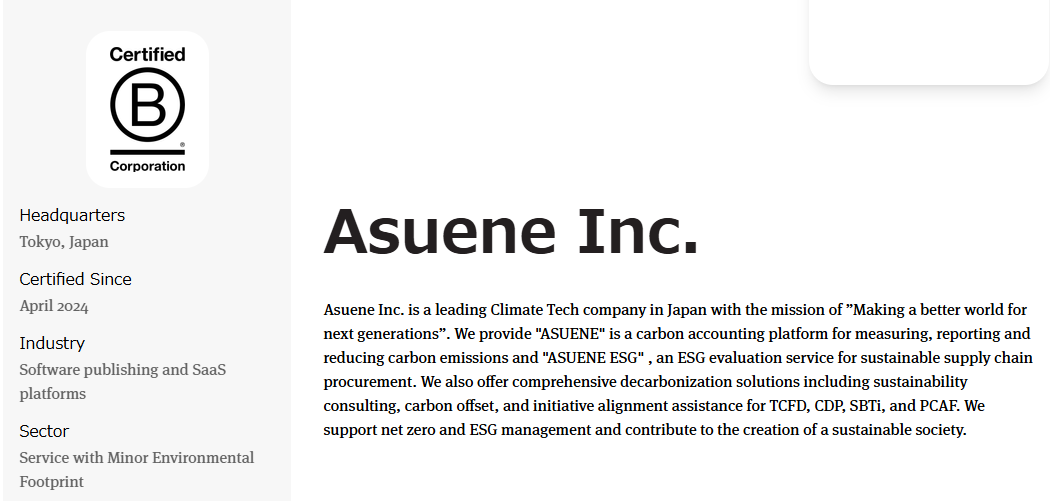
Importantly, certification isn’t the end of the journey – it’s a milestone in an ongoing process of improvement. B Corp Certification must be renewed every three years, which means your company will need to submit an updated B Impact Assessment and undergo verification again to maintain certification. This ensures that B Corps continue to walk the talk and even raise their performance over time. Many B Corps use the interim years to implement new initiatives and boost their impact further, treating the certification as a framework for continuous improvement rather than a one-time checkbox.
Long Term Value of Becoming a B Corp
Becoming a Certified B Corporation is more than an accolade – it’s a transformational process that can align your business with the values of conscious consumerism, attract impact investors, and inspire your team by instilling a sense of purpose. In pursuing B Corp certification, you will likely find that your company becomes more efficient, resilient, and innovative. By focusing on stakeholder value, you uncover new opportunities and risks that traditional profit-only lenses might miss. Whether it’s reducing energy costs through efficiency (helping both the planet and your bottom line) or improving employee retention because of a better workplace culture, the changes you make for B Corp can pay off financially and socially.
Moreover, B Corp Certification builds trust with stakeholders in an age where trust is a currency. Consumers are increasingly savvy – they seek out brands that verify their social and environmental claims. Having the independent B Lab verification gives your stakeholders confidence that you truly “walk the talk.” This can open doors to partnerships and community relationships that might not be available to non-certified firms. For example, some procurement processes and impact-focused investors now encourage or even require B Corp status or equivalent as a mark of credibility.
It’s also worth noting the camaraderie and knowledge-sharing within the B Corp community. As a certified company, you gain access to a network of like-minded businesses. B Corps often support each other, collaborate on solutions to common challenges, and even prefer to do business with fellow B Corps, amplifying your community engagement beyond your immediate vicinity. The movement is about collective action – “better together” is a mantra you’ll hear in B Corp circles.
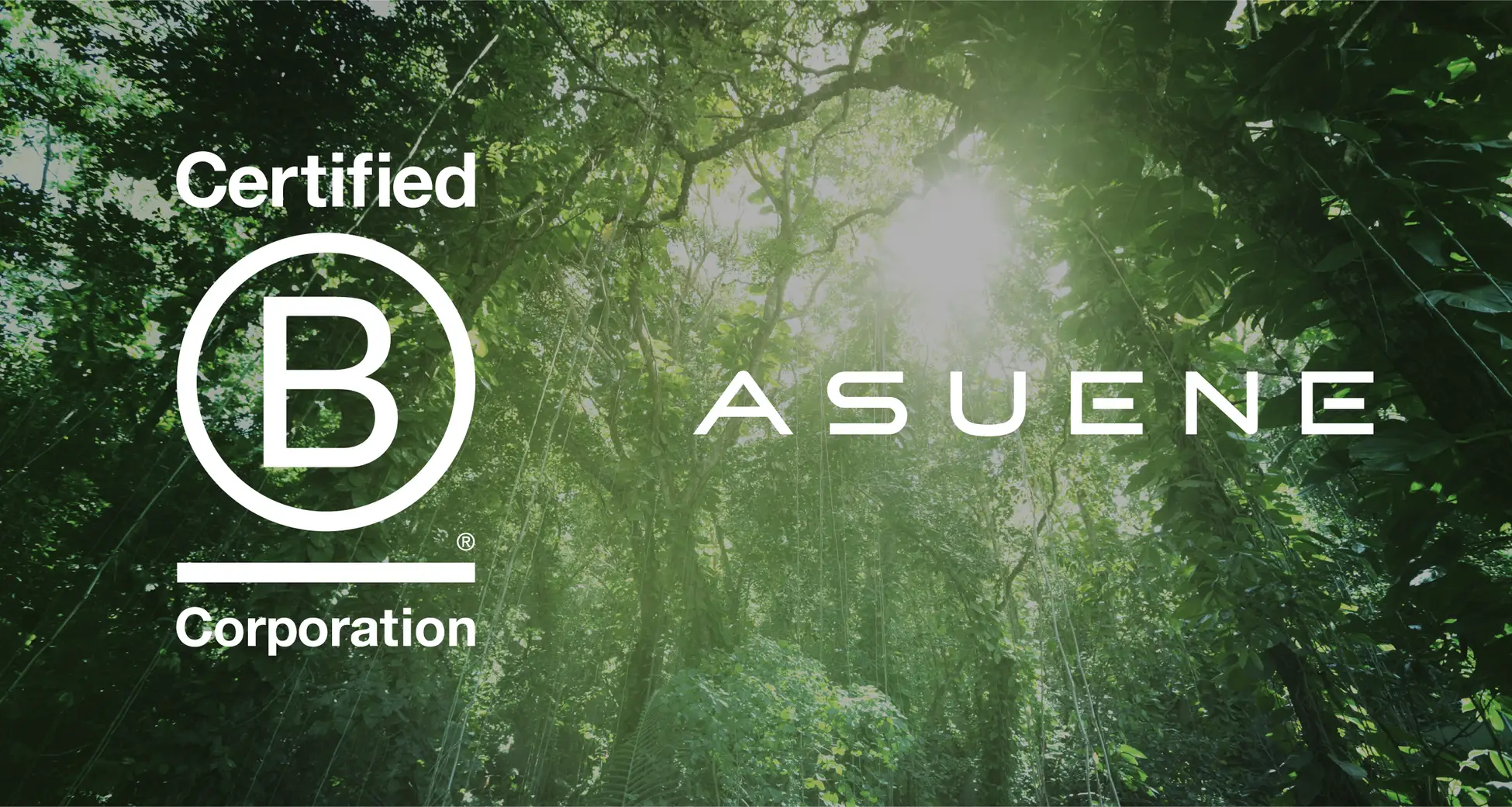
Why Work With ASUENE USA Inc?
Asuene USA is here to help companies navigate this journey. Our parent company, Asuene Inc., is itself a Certified B Corporation – we earned an overall B Impact Score of 83.5, surpassing the rigorous 80-point bar for certification. This firsthand experience, combined with our expertise in carbon accounting and sustainability consulting, makes us an ideal partner for businesses aspiring to B Corp status. We can assist with conducting your initial impact assessment, identifying gaps, and implementing strategies to improve your score – whether it’s reducing carbon emissions, engaging employees in sustainability, or improving supply chain transparency. Think of us as your co-pilot on the road to certification, providing tools (like our all-in-one sustainability platform) and advisory support to streamline the process.
The B Corp journey doesn’t end at certification – it’s a continuous cycle of assess, improve, and inspire. And as you progress, you’ll not only create positive impact for stakeholders, but also strengthen your business for the long haul. That is the true long-term value of becoming a B Corp. If you’re ready to take the next step, Asuene USA can provide the guidance and tools to turn your B Corp aspirations into reality. Join the movement of businesses that are proving you can do well by doing good – and let’s make business a force for good together.

